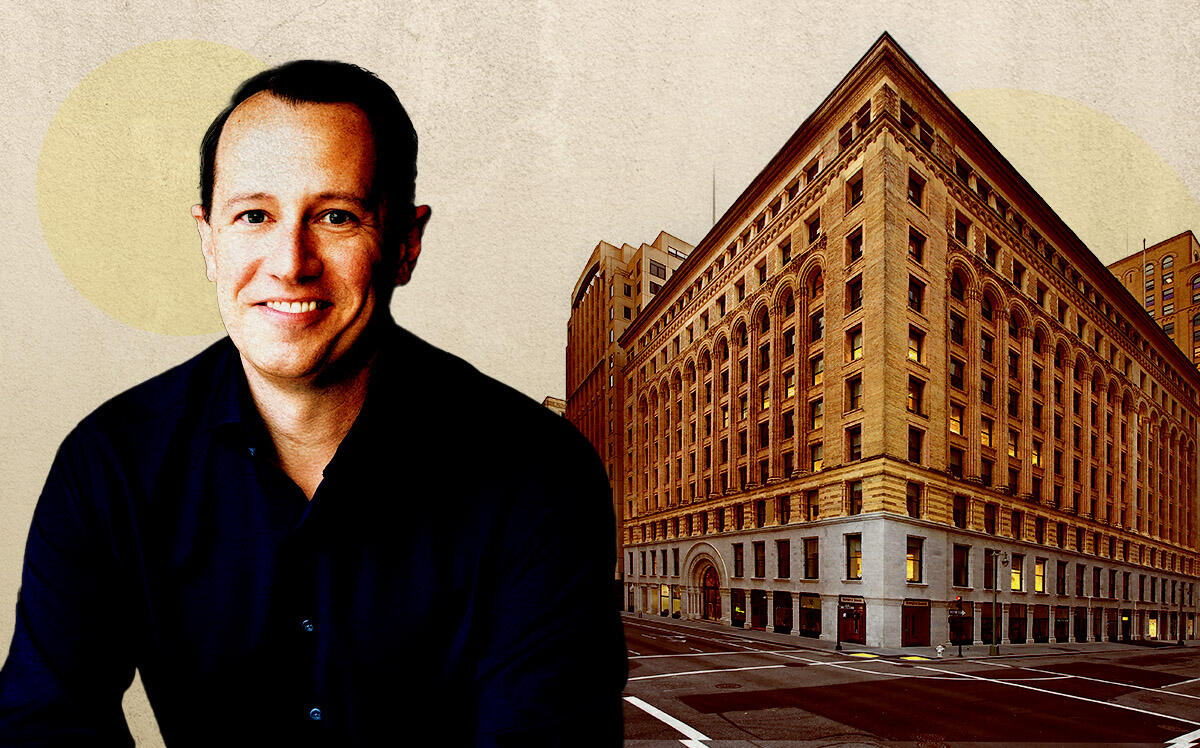
Trending
Gensler pushes carbon-neutral offices, starting in SF
Climate friendliness added to tenants’ list of amenities when looking for space


Gensler’s Randy Howder and Mills building (The Swig Company, Getty, Oksana Kovneva)
As the world’s largest architectural firm, Gensler had plenty of options for the relocation of its San Francisco hub, especially with the high availability in the city’s office market.
But climate concerns made options for the new office limited, said Randy Howder, Gensler’s managing director in San Francisco.
Gensler has a goal of making all of its projects and operations carbon neutral by 2030 and has made moving the needle on greenhouse gasses and carbon in the building and architecture industries one of its primary goals, he said. With California’s and San Francisco’s grid getting greener every year, the only way to get to carbon neutral status is an all-electric office, he said.
“In our search, this was the overriding concern, that we find a home that could help us exceed those goals,” he said. “Most commercial buildings are powered by fossil fuels in one way or another.”
Historic but futuristic
When his team toured the second floor of the historic Mills Building at 220 Montgomery Street, which The Swig Company had overhauled to meet LEED Platinum and WELL Health-Safety standards, they knew they had found their new home, Howder said. Swig committed to making the space all electric, plus it will have operable windows to cut down on heating and cooling costs. Also, the low floor means team members and visitors could easily take the stairs, further reducing energy consumption.
The full-floor footprint allows the firm to move from 55,000 square feet on three floors at Shorenstein Properties’ 45 Fremont Street to a more efficient 45,000 square feet on one floor in its new building. The team also liked the tall ceilings and historic charm of the building, which was built in the 1890s and restored by Willis Polk after the 1906 earthquake and fires.
“We’re visual people, and so we had to walk into a space, just as if you’re house hunting,” he said. “And then when the second breath was, ‘Well, it’s ready for you to be an all-electric tenant,’ we were like, ‘Where do we sign?’”
Gensler didn’t just sign, it committed to a 12-year lease, which is exceptional given the recent focus on short-term leases, and said it could expand further into other eco-friendly Swig spaces if it outgrows the new office. Howder called San Francisco the firm’s “spiritual home” and one of its top-five biggest offices. He said that Gensler planned to make similar moves towards offices that bring the firm closer to carbon neutrality as its other leases expire around the world.
“We are using our profile, our place in the industry to really drive change,” he said. “We really wanted the office to be a place that we can bring our clients and show them what a really sustainable space looks like and what an all-electric building can do for you.”
Even before the move, some clients have already gotten the message, he said, citing an all-electric office Gensler is designing for Adobe in San Jose and the move towards all-electric facilities at SFO. He also said many companies that are huge takers of office space in San Francisco and the rest of the Bay Area, such as Apple, Salesforce and Google, had joined the Science Based Targets initiative, agreeing to practices that reduce climate change. He expects those public commitments to drive their checklists for office space moving forward.
“This is more top-of-mind than I think it has been ever before,” he said.
Tenant’s checklist
Swig President Connor Kidd said that it is upgrading its buildings across its 9-million-square-foot portfolio to hit its Environmental Social and Governance targets, which it released for the first time last year because so many tenants, lenders and capital partners asked for it. By the second quarter of this year, the investor-operator hopes to be able to announce its greenhouse gas targets as well.
As tenants become more climate conscious, and have an ever-increasing inventory of options to choose from, landlords whose buildings do not help clients meet their sustainability goals will be at a deficit, he added.
“Right now, I think in order to be successful in leasing office space, you have got to have it all,” he said. “The amenities, the high-quality space and the eco-mindedness, I think that is now part of ticking the box. You make the tour, or you don’t.”
Swig operates in the Bay Area, Seattle, Los Angeles and New York. Kidd said that the West Coast is more focused on climate change while New York tenants are interested in health and safety ratings but are less focused on achieving sustainability goals. Even in eco-friendly San Francisco, he said clients are often happy if a building has a LEED rating, without focusing specifically on carbon neutrality the way Gensler has.
“There’s always some companies that are going to push the envelope a little bit more,” he said. “But we’re seeing more companies come out with targets of being either carbon neutral or reducing their carbon footprint by a certain portion. So that’s probably the next frontier, if you will, of what tenants are going to ask for.”
Carbon neutrality trend
David Gonzales, who manages construction at Avison Young, says green upgrades like LED light bulbs and low-flow fixtures in bathrooms have been around for years but carbon neutrality was added to the list shortly before the pandemic.
He said the conversation with tenants now revolves first and foremost around price, and secondly about potential for growth. Carbon neutrality is part of the total amenities package that tenants look at third as a way to attract and retain employees, right alongside gyms, coffee shops and bike parking. How important green amenities are when compared to others really comes down to “the core culture of that firm,” Gonzales said, with tech, biopharmaceuticals, Fortune 500 companies, and some hedge funds and law firms ranking it higher.
Building developers also typically have sustainability as one of their core values if they are taking on these extensive and expensive upgrades, he said.
“They’re doing this because they want to be better as a corporation and they think, in the long term, their buildings will be better,” he said.
Gensler’s Howder said that developers and owners know that “hermetically sealed buildings” run by fossil fuels aren’t the future of what tenants will want and eventually landlords tend to come around to providing the amenities that the market demands. Reducing a building’s carbon footprint also makes sense beyond the financial implications in a state that seems to be in a perpetual state of drought or flood, he said.
“As we’re all sitting at home because of the fourth atmospheric river coming this winter, and two years ago we had that orange sky day, it’s very palpable here in California that the climate is changing,” he said. “So our clients are definitely more attuned to making decisions with this in mind than just purely financial decisions. But when it can be both, it’s a kind of a win-win. And that was, I think, the case for us.”
Read more







